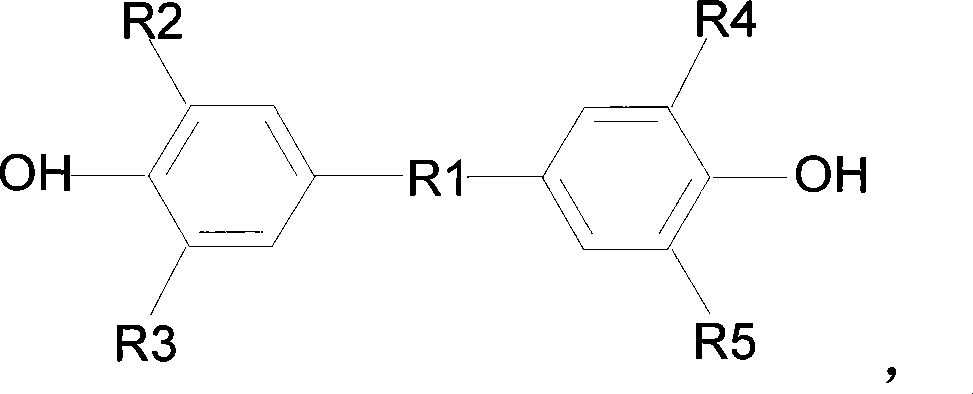Thermosetting resin composition and use
A resin composition, thermosetting technology, applied in layered products, metal layered products, circuit substrate materials, etc., can solve the problems of poor thermal stability, poor processability, high water absorption, and improve heat resistance and dielectric. Effects of performance, good PCB processability, high thermal reliability
- Summary
- Abstract
- Description
- Claims
- Application Information
AI Technical Summary
Problems solved by technology
Method used
Image
Examples
Embodiment 1~5
[0043] When the acid anhydride equivalent and phenolic hydroxyl equivalent change compared with the epoxy equivalent, the Tg and other properties of the copper clad laminate produced by the above experimental method of the resin composition will change accordingly. The specific Tg changes are shown in the data in Table 1. When the equivalence ratio is 0.9:1.0-1.1:1, the corresponding Tg of the copper clad laminate is relatively the highest.
[0044] Table 1
[0045] Example number 1 2 3 4 5 Anhydride equivalent + phenolic hydroxyl equivalent 1.6 1.3 1.1 0.9 0.6 epoxy equivalent 1 1 1 1 1 Tg(DSC)(℃) 162 165 185 175 138
[0046] Note: The ratio of each component in the above table is calculated as solid.
Embodiment 6
[0047] Embodiment 6 (comparative example)
[0048] Configure the resin composition according to the following formula: first adopt 192g of butanone (abbreviated as MEK) solvent to dissolve 156g of SMA3000 and 40g of TBBA, then add 185g of BET-535A80 (solid content is 80%, 20% is acetone solvent) and 93.3 g of BET-400T60 (solid content is 60%, 40% is toluene solvent), then add 0.12g of 2-ethyl-4-methylimidazole (2E4Mz for short), stir for 2 hours and mix well, according to the above Implementation method Copper clad laminates were fabricated and tested for their physical and electrical properties. In this embodiment, the ratio of acid anhydride equivalents plus phenolic hydroxyl equivalents to epoxy equivalents is 1.1:1.
Embodiment 7
[0049] Embodiment 7 (comparative example)
[0050] The resin composition is configured according to the following formula: first adopt 200g of butanone solvent to dissolve 140g of SMA3000 and 36g of TBBA, then add 165g of BET-535A80 (solid content is 80%, 20% is acetone solvent), 86.7g of BET- 400T60 (solid content is 60%, 40% is toluene solvent) and 40g of TAC, then add 0.4g of tert-butyl peroxybenzoate and 0.12g of 2E4Mz, mix well after stirring for 2 hours, according to the implementation method described above Fabricate copper clad laminates and test their physical and electrical properties. In this embodiment, the ratio of acid anhydride equivalents plus phenolic hydroxyl equivalents to epoxy equivalents is 1.1:1.
PUM
 Login to View More
Login to View More Abstract
Description
Claims
Application Information
 Login to View More
Login to View More - R&D
- Intellectual Property
- Life Sciences
- Materials
- Tech Scout
- Unparalleled Data Quality
- Higher Quality Content
- 60% Fewer Hallucinations
Browse by: Latest US Patents, China's latest patents, Technical Efficacy Thesaurus, Application Domain, Technology Topic, Popular Technical Reports.
© 2025 PatSnap. All rights reserved.Legal|Privacy policy|Modern Slavery Act Transparency Statement|Sitemap|About US| Contact US: help@patsnap.com



